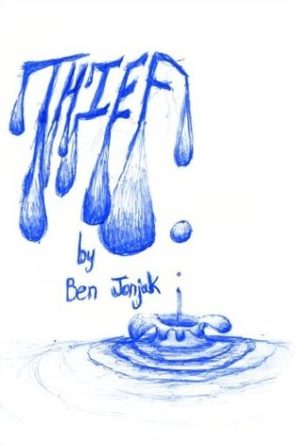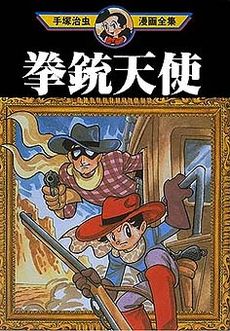
This is a self-published novella (back from the old POD days of LuLu and iUniverse, when this cost money) about a thief on the streets of Lima.
He starts out as an orphan. He gets snatched by a professional beggar who uses him as a prop to gain sympathy from tourists. He gets adopted by a pedophile priest who rapes him. And so on, and so forth. The book doesn’t do subtlety.
Thief is annoying and overbearing even by self-pub standards. Ben Jonjak takes apart the fourth wall with a wrecking ball, interrupting his story sometimes multiple times per page to rant directly to the reader about global poverty and rich Americans and white people and Oprah. Thief is one of those books that shouts stage directions at you. “Isn’t this sad? Isn’t this outrageous?” This is a hallmark of a poor writer: telling the reader what to think and feel instead of allowing those things to happen naturally.
Nobody edited this book – maybe it’s from a country where red pens are illegal. Witness the main character’s name suddenly change from “Junior” to “Patch” without explanation, punctuation both missing where it belongs and added where it doesn’t, countless orphan clauses (appropriate?), as well as lapses into outright illiteracy (an actual quote: “Take it! Seize it! Warship every day as a Devine blessing to mold yourself into a keen, perfect thing.” Calm down, Down Syndrome Tony Robbins.)
So the book has problems. It’s awkward and is barely written in English at times. But I’ll say this: although I often put the book down, I always picked it back up again. It’s strangely interesting.
The author lives in Peru, and the book evokes a convincing milieau (note that I say convincing, not realistic). Even the self-indulgent parts – by way of a foreword, he spends a few pages complaining about how someone stole his wallet – add to the lived-in quality.
And there’s actually a fairly strong story here, particularly in the final section the thief finally starts getting proactive about changing his situation. Part of what’s frustrating about Thief is that it often ignores human agency – Junior/Patch is just a punching bag for fate. In the final pages it’s nice to see him fighting back at last, even if it’s in the worst way possible.
Thief is as obscure as small press books can get without being published in an enclosed bomb shelter, and the author appears to have given himself positive Amazon reviews under a fake name, which is a shame. But I don’t feel robbed by Thief. Self-published books are often shit but they’re also often compelling, and this book manages to be both.
 Stack all Osamu Tezuka’s comics in descending order of quality, travel downward about fifty thousand pages, and you arrive at things like Angel Gunfighter. Welcome to the land of Osamu Mehzuka.
Stack all Osamu Tezuka’s comics in descending order of quality, travel downward about fifty thousand pages, and you arrive at things like Angel Gunfighter. Welcome to the land of Osamu Mehzuka.
Angel Gunfighter was serialised in 1948, and is interesting because it shows the influence Western animation had on anime’s early years. The characters’ limbs have a boneless “rubber hose” quality similar to Mickey Mouse and Felix the Cat, and various other things seem redolent of the 1930s golden age, too.
This manga is Western in a couple of senses. For one, it is set in our romanticised version of the Wild West, complete with bars with batwing doors and random barrels that exist to get shot and leak liquid out of perfect bullet holes. For another, it’s Western in its storytelling aesthetic, too: plucky underdog trying to get the girl, and all that. I sort of wish Tezuka had done a more Japanese take on this kind of story. American art is well known for borrowing ideas from Japan (The Hidden Fortress becoming Star Wars, to use a famous example), and I suppose the reverse is true over there.
There’s a brief dramatis personae where we learn about the characters (Ham Egg, the rogue cop trying to take over the town – Monster, the half-Indian sharpshooter who is trying to stop said rogue cop from taking over the town, etc). Angel Gunfighter is a one volume manga, so there’s no question of the characterisation being presented organically in the story. There’s a couple of supporting characters who don’t have much to do. One suspects Osamu Tezuka was just importing Western tropes without considering whether the story had a use for them.
Occasionally Tezuka’s formidable imagination takes flight in spite of itself (I liked the farmer who has trained his pigs to be soldiers). These scenes of inspiration are fairly rare, and the comic spends much of its time reciting Western cliches like some sort of catechism. There’s whooping Indians on horses descending on hapless caravans, and a dame who gets tied to train tracks, and a couple of gunfights that end with someone dangling off a cliff.
Monster is a particular problem. He’s perfect, anodyne, and Mary-Sueish – therefore, boring. I like Ham Egg. He’s such a violent bully that interesting things happen by simple dint of him getting page time.
The comic is fun and action-packed, and full of nice visual gags. But it doesn’t stick with you. The scenario is hopelessly familiar, the art is derivative of Walt Disney, and the storytelling is workmanlike. I assume Tezuka was cranking this stuff out at his usual twenty pages a day to meet a deadline. It’s entertaining, especially if you’re a kid, but it’s the kind of comic you can be distracted from by a passing fly.
 Neil Tennant from the Pet Shop Boys speaks about an “Imperial phase”, or the period where a band is at its zenith. Exactly when this period occurs is anyone’s guess. But the important thing is that you can only recognise it when it’s over.
Neil Tennant from the Pet Shop Boys speaks about an “Imperial phase”, or the period where a band is at its zenith. Exactly when this period occurs is anyone’s guess. But the important thing is that you can only recognise it when it’s over.
While he lived, Edgar Allan Poe wrote (on a writing desk and otherwise) to temperate critical reception and little money. But few men have left a greater a shadow behind them – or a darker one. Poe doesn’t inspire, he haunts. Tales of Mystery and Imagination is his most famous collection, and was my first exposure to his work. I don’t have my father’s early 20th century edition any more, but from memory it was different to some modern editions – it started with “MS Found in a Bottle”, included “The Black Cat”, and omitted a few stories like “Conversation with a Mummy.”
No matter the exact lineup of stories, this collection focuses on the macabre and grotesque side of Poe, and it’s not representative of the totality of his work. Poe was never known for respecting boundaries, and his bibliography is full of digressions into satire and adventure and cryptography and fashionable sciences of the day, such as phrenology. The only nod to this in Tales of Mystery and Imagination is the inclusion of his detective stories. “Murders in the Rouge Morgue” and “The Mystery of Marie Roget” are influential stories featuring one Auguste Dupin, a crime-solving legerdemain who would inspire characters such as Arthur Conan Doyle’s Sherlock Holmes, Agatha Christie’s Hercule Poirot, and Tar? Hirai’s Kogoro Akechi.
“The Black Cat”, and “A Cask of Amontillado” are frightening in a precise, analytic way – perfectly lucid people doing perfectly deranged acts. “Berenice” and “The Tell-Tale Heart” are ambiguous and even more frightening – delirious slipstreams of events remembered by the mad, half told and half rambled. I like the way “The Pit and the Pendulum”‘s hero finds a way to fight his fate – Poe’s characters are often not sane, but they’re never craven or pathetic.
“The Fall of the House of Usher” and “Masque of the Red Death” have an aura of rotted, decaying glory, as well as Poe’s usual grotesque themes. “William Wilson” is a doppelganger story told by a narrator so close to the line between sanity and insanity that even he cannot be sure of which side he’s on. They’re all good, but the story that stayed with me the longest was “Facts in the Case of M Valdemar”, about a nightmarish experiment where a dying man is placed under hypnosis. I had asked him, it will be remembered, if he still slept. He now said: “Yes; — no; — I have been sleeping — and now — now — I am dead.”
Credit must be given to Harry Clarke’s art, which takes Poe’s descriptions and gives them horrid life. He draws corpses and living people and there is little difference between them – everyone looks ectomorphic and wasted and distressingly thin. His obsessive detail captures the neurotic aspect of Poe’s stories, but his art has a nostalgic quality, too. Nobody will ever illustrate Poe’s stories as well as as Harry Clarke, and nobody should try.
This collection reveals one facet of Poe’s writing, and it’s only a shame that so much had to be left out. Please get Tales of Mystery and Imagination – but please leave space on the shelf beside it.



